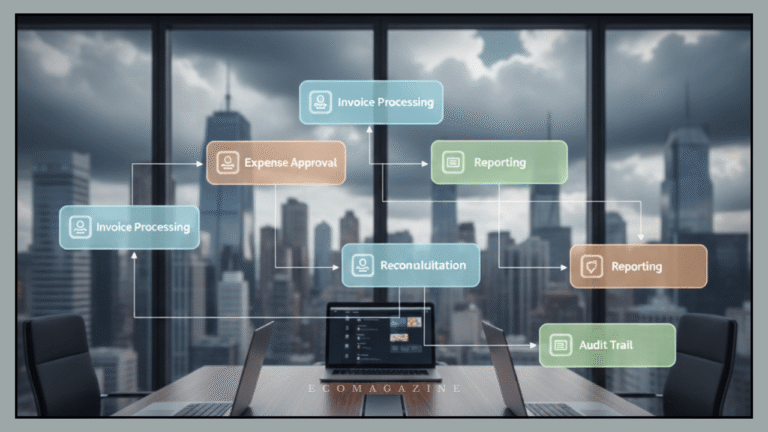Accounting teams face growing pressure to do more with less — manage more transactions, handle complex reports, and ensure compliance faster than ever. Traditional tools and manual processes often slow them down, leading to errors, delays, and inefficiency. That’s where modern technology steps in.
A no-code workflow platform is changing how businesses manage their accounting processes. By allowing teams to design, automate, and optimize workflows without writing a single line of code, it brings flexibility, accuracy, and speed to financial operations. These platforms transform the functions of accounting — from managing invoices and payments to preparing reports and ensuring compliance — making accounting departments more efficient and future-ready.
1. The Challenges of Traditional Accounting Processes
Traditional accounting systems rely heavily on spreadsheets, emails, and manual data entry. While this worked for smaller teams in the past, it creates major problems today:
- Manual errors: Entering data by hand increases the risk of mistakes.
- Lack of visibility: It’s difficult to track the progress of approvals or pending actions.
- Slow turnaround times: Simple tasks like expense approvals or invoice validation can take days.
- Poor collaboration: Teams across finance, procurement, and operations often work in silos.
These challenges don’t just waste time — they also affect decision-making and business agility.
2. What is a No-Code Workflow Platform?
A no-code workflow platform is a digital tool that enables anyone — not just developers — to create automated workflows through visual interfaces. Instead of writing code, users can drag and drop steps, set conditions, and integrate systems with just a few clicks.
Platforms like Cflow empower finance teams to automate complex accounting processes without depending on IT. Digital workflows can streamline every task, whether generating invoices, routing approvals, or reconciling accounts.
In simple terms, no-code platforms bring the power of automation into the hands of accounting professionals themselves.
3. How No-Code Platforms Revolutionize Accounting Functions
Let’s see how these platforms transform core accounting functions:
a. Streamlining Transaction Recording
Recording transactions is one of the most repetitive yet essential functions in accounting. No-code workflows automatically capture, categorize, and verify every transaction.
For example, when a vendor invoice arrives, the platform can read the details, verify against purchase orders, and send it for approval — all without manual intervention.
b. Automating Financial Reporting
Creating reports used to mean pulling data from multiple spreadsheets and systems. With automated workflows, data flows smoothly from source to report. Accountants can design workflows that consolidate data, apply formulas, and generate reports in real time — reducing reporting time from days to minutes.
c. Improving Accounts Payable and Receivable
Manual invoice approvals are one of the biggest bottlenecks in accounting. A no-code platform automates the invoice-to-payment process — routing documents to the right people, sending reminders, and even integrating with payment systems.
Similarly, for receivables, it can send automated payment reminders and update ledgers once payments are received.
d. Enhancing Budgeting and Forecasting
With all financial data centralized and workflows automated, accountants get better visibility into spending patterns. No-code tools make it easier to build budgeting workflows, compare actual vs. projected expenses, and adjust forecasts dynamically.
e. Ensuring Compliance and Audit Readiness
Compliance and audit preparation are time-consuming. Every document must be properly tracked, approved, and stored. No-code workflows ensure every action — from expense submission to approval — is recorded with time stamps and digital audit trails, making audits smoother and more transparent.
f. Boosting Collaboration Across Departments
A key advantage of no-code platforms is their ability to connect departments. For example, finance can collaborate with HR on payroll, with procurement on vendor payments, or with operations on expense control — all within the same platform.
4. Key Benefits of Adopting No-Code Workflow Automation in Accounting
- Time Savings: Tasks that once took hours can now be done automatically in minutes.
- Fewer Errors: Automation reduces manual data entry and eliminates inconsistencies.
- Transparency: Every process is tracked and auditable.
- Scalability: Workflows can easily adapt to new regulations or business growth.
- Empowered Teams: Accountants can build and modify workflows on their own without IT dependency.
For instance, companies using Cflow’s no-code platform have reported over 70% faster invoice processing times and improved accuracy in reconciliation tasks.
5. Real-World Example
Imagine a company handling hundreds of vendor invoices every month. Traditionally, each invoice must be reviewed, approved by department heads, verified against purchase orders, and entered into the accounting system — a process that could take weeks.
By using a no-code workflow platform, the company designs a simple automated flow:
- Vendor uploads an invoice.
- The system auto-verifies it with the PO.
- If matched, it routes to finance for approval.
- Once approved, payment is triggered automatically.
This not only saves days of manual effort but also ensures accuracy, transparency, and faster payments — a win for both the company and its vendors.
Conclusion
The future of accounting lies in automation, and no-code workflow platforms are leading the way. They empower accounting teams to move away from repetitive manual tasks and focus on what truly matters — financial analysis, strategic planning, and business growth.
By automating the functions of accounting, businesses can achieve higher efficiency, accuracy, and compliance without increasing headcount or IT costs. A no-code workflow platform like Cflow helps finance teams embrace digital transformation effortlessly — turning traditional accounting departments into agile, data-driven powerhouses.
It’s time for finance leaders to make the switch — and revolutionize accounting with the simplicity of no-code automation.


